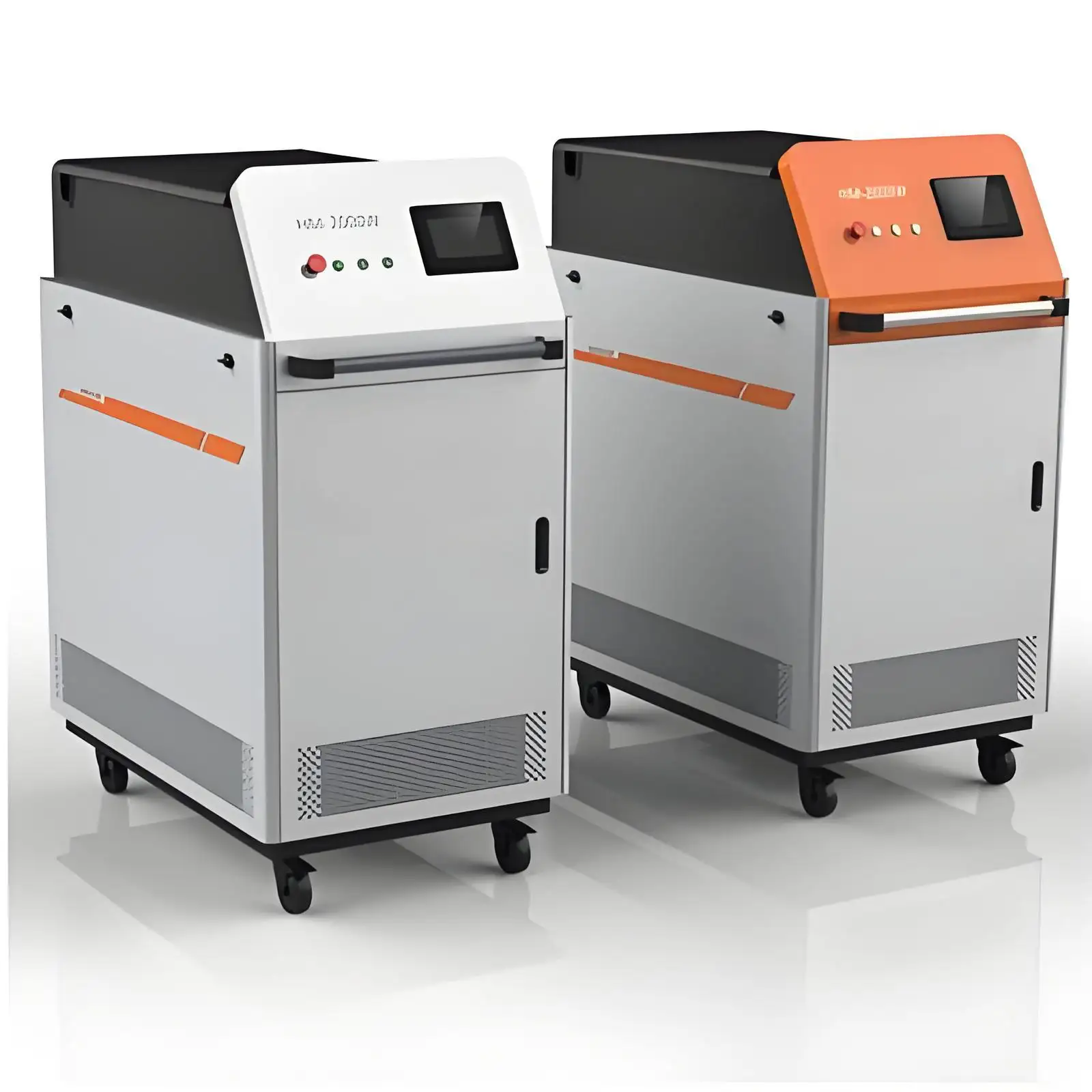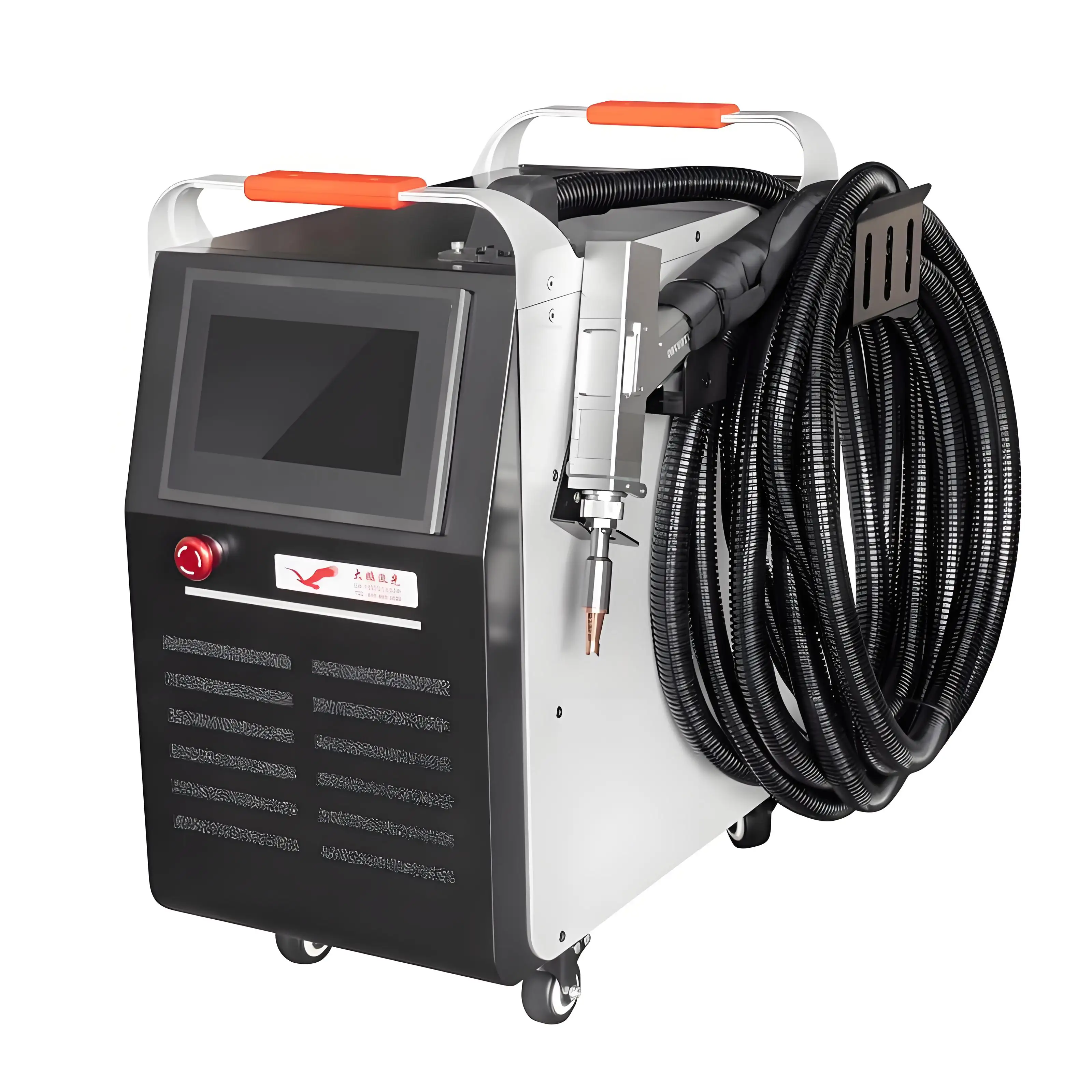Laser rust removal has become a revolutionary technology in the world of surface treatment and maintenance. As someone who has been involved in the industry for many years, I have seen first-hand how laser rust removal has changed the way we deal with rust and corrosion. Today, I want to answer a question that often comes up: Can laser rust removal automatically identify rust spots? Let’s dive deeper into this topic and explore the capabilities and limitations of laser rust removal technology.

Understanding Laser Rust Removal
Before we can answer the question at hand, it’s essential to understand how laser rust removal works. Laser rust removal, also known as laser cleaning, uses high-energy laser beams to vaporize or ablate rust, paint, and other contaminants from surfaces. The process is non-contact, meaning it doesn’t require any physical contact with the surface being cleaned, which reduces the risk of damage and ensures a high level of precision.
How Laser Rust Removal Works
Laser Beam Generation: A laser source generates a high-energy laser beam.
Beam Delivery: The laser beam is delivered to the surface via a series of optics, such as mirrors and lenses.
Interaction with Rust: When the laser beam hits the rust, it rapidly heats the rust particles, causing them to vaporize or ablate.
Contaminant Removal: The vaporized or ablated rust particles are then removed from the surface, leaving behind a clean, rust-free finish.
The Concept of Automatic Rust Spot Identification
Now, let’s tackle the main question: Can laser rust removal automatically identify rust spots? The short answer is not entirely, but the technology is evolving in ways that make it increasingly capable of distinguishing between rust and the underlying substrate.
Current Capabilities
Manual Adjustment: In most current laser rust removal systems, the operator needs to manually adjust the laser parameters (such as power, pulse duration, and frequency) based on the type and thickness of the rust. This requires a certain level of expertise and experience.
Visual Inspection: Before starting the laser rust removal process, operators typically perform a visual inspection of the surface to identify rust spots and determine the appropriate laser settings.
Feedback Systems: Some advanced laser rust removal systems incorporate feedback mechanisms that monitor the cleaning process in real-time. These systems can detect changes in the surface reflectivity or temperature, which can indicate the presence of rust. However, these systems are not yet sophisticated enough to autonomously identify and target only rust spots without some level of operator input.

Emerging Technologies
While current laser rust removal systems may not fully automate rust spot identification, there are emerging technologies that hold promise for the future:
Machine Learning and AI: By integrating machine learning algorithms and artificial intelligence (AI), laser rust removal systems could potentially learn to recognize patterns and characteristics of rust spots. This would enable them to automatically adjust laser parameters and target only the rusted areas.
Advanced Sensors: The development of more advanced sensors, such as hyperspectral imaging or 3D scanning, could provide laser rust removal systems with more detailed information about the surface being cleaned. This would allow for more precise rust spot identification and targeting.
Robotic Integration: Combining laser rust removal with robotic technology could lead to fully automated systems that can navigate around complex surfaces and identify rust spots without human intervention.
Practical Considerations
While the idea of fully automated rust spot identification is exciting, there are several practical considerations to keep in mind:
1. Surface Variability
Surfaces can vary widely in terms of material, texture, and condition. This variability can make it challenging for laser rust removal systems to accurately identify rust spots, especially in complex or irregularly shaped objects.
2. Cost and Complexity
Implementing fully automated rust spot identification would likely require significant investment in advanced sensors, AI algorithms, and robotic systems. This could increase the cost of laser rust removal equipment and make it less accessible for smaller businesses or individual users.

3. Operator Training
Even with advanced automation, operators would still need to be trained to use and maintain the laser rust removal systems effectively. This includes understanding how to interpret sensor data, adjust laser parameters, and troubleshoot any issues that may arise.
4. Safety Concerns
Laser rust removal involves the use of high-energy laser beams, which can pose safety risks if not handled properly. Automated systems would need to incorporate robust safety features to prevent accidents and protect operators and bystanders.
Case Studies and Real-World Applications
To better understand the capabilities and limitations of laser rust removal in identifying rust spots, let’s look at some real-world applications and case studies:
Case Study 1: Automotive Industry
In the automotive industry, laser rust removal is often used to clean engine parts, brake components, and other metal surfaces. While operators typically perform a visual inspection before starting the cleaning process, some advanced systems incorporate feedback mechanisms that adjust laser parameters based on the surface condition. However, fully automated rust spot identification is not yet common practice in this industry.
Case Study 2: Shipbuilding and Marine Maintenance
Shipbuilding and marine maintenance present unique challenges due to the large size and complexity of ships and the harsh marine environment. Laser rust removal is used to clean hulls, decks, and other surfaces to prevent corrosion and extend the lifespan of the vessels. While some systems use sensors to monitor the cleaning process, operators still play a crucial role in identifying rust spots and ensuring thorough cleaning.

Case Study 3: Aerospace Industry
In the aerospace industry, precision and reliability are of utmost importance. Laser rust removal is used to clean aircraft components, such as landing gear, engine parts, and structural elements. While the industry is constantly exploring new technologies to improve efficiency and accuracy, fully automated rust spot identification is still in the research and development phase.
Comparison Table: Traditional vs. Laser Rust Removal with Automation Potential
| Aspect | Traditional Rust Removal | Laser Rust Removal (Current) | Laser Rust Removal (With Automation Potential) |
|---|---|---|---|
| Rust Spot Identification | Manual, visual inspection | Manual adjustment with some feedback | Automated, using AI and advanced sensors |
| Precision | Limited, may damage underlying substrate | High, non-contact process | Even higher, with precise targeting of rust spots |
| Efficiency | Slow, labor-intensive | Faster, but requires operator expertise | Potentially much faster, with autonomous operation |
| Cost | Low initial investment, but may require more labor and materials | Higher initial investment, but lower operating costs over time | Highest initial investment, but potential for significant long-term savings |
| Safety | Risk of chemical exposure, manual labor injuries | Risk of laser exposure, but with proper safety measures | Similar risks to current laser systems, but with potential for improved safety through automation |
The Future of Laser Rust Removal and Rust Spot Identification
As technology continues to advance, the future of laser rust removal looks promising. Here are some trends and developments to watch out for:
1. Increased Automation
We can expect to see more laser rust removal systems incorporating automation features, such as AI algorithms and advanced sensors, to improve rust spot identification and targeting.
2. Integration with IoT and Cloud Computing
By integrating laser rust removal systems with the Internet of Things (IoT) and cloud computing, operators can remotely monitor and control the cleaning process, access real-time data, and optimize laser parameters for different surfaces and conditions.
3. Portable and Handheld Devices
The development of portable and handheld laser rust removal devices could make the technology more accessible for smaller businesses and individual users. These devices could incorporate simplified automation features to make rust spot identification easier for non-experts.
4. Sustainability and Environmental Benefits
Laser rust removal is already a more sustainable and environmentally friendly alternative to traditional chemical rust removal methods. As automation improves, we can expect to see even greater reductions in waste, energy consumption, and chemical usage.

Conclusion
In conclusion, while current laser rust removal systems may not fully automate rust spot identification, the technology is evolving rapidly, and we can expect to see significant advancements in the coming years. By integrating machine learning, AI, advanced sensors, and robotic technology, laser rust removal systems could potentially become fully autonomous, capable of identifying and targeting rust spots with unprecedented precision and efficiency.
However, it’s important to remember that even with advanced automation, operators will still play a crucial role in ensuring the success of laser rust removal projects. This includes understanding the capabilities and limitations of the technology, performing proper surface preparation, and monitoring the cleaning process to ensure optimal results.
As the industry continues to innovate and push the boundaries of what’s possible, laser rust removal will undoubtedly become an even more valuable tool for surface treatment and maintenance. Whether you’re in the automotive, shipbuilding, aerospace, or any other industry that deals with rust and corrosion, keeping an eye on the latest developments in laser rust removal technology could pay off in the long run.
Related Questions and Answers
Q1: Is laser rust removal safe for all types of materials?
A1: Laser rust removal is generally safe for most metals, including steel, aluminum, and copper. However, it’s important to note that the laser parameters (such as power and pulse duration) need to be carefully adjusted based on the type and thickness of the material being cleaned. Some materials, such as certain plastics or composites, may be more sensitive to laser exposure and could be damaged if not handled properly.
Q2: Can laser rust removal remove paint and other coatings as well as rust?
A2: Yes, laser rust removal is not limited to just rust. It can also effectively remove paint, grease, oil, and other contaminants from surfaces. The same principles apply—the laser beam heats and vaporizes or ablates the unwanted material, leaving behind a clean surface.
Q3: How long does the laser rust removal process take?
A3: The duration of the laser rust removal process depends on several factors, including the size and complexity of the surface being cleaned, the thickness and type of rust or contaminants, and the laser parameters used. In general, laser rust removal is faster than traditional chemical methods, but it still requires some time to ensure thorough cleaning.
Q4: Are there any environmental benefits to using laser rust removal?
A4: Yes, laser rust removal offers several environmental benefits compared to traditional chemical methods. It doesn’t produce hazardous waste or require the use of harmful chemicals, reducing the risk of pollution and environmental contamination. Additionally, laser rust removal is a more energy-efficient process, contributing to overall sustainability.
Q5: Can laser rust removal be used on historical or delicate artifacts?
A5: Laser rust removal can be a viable option for cleaning historical or delicate artifacts, but it requires extreme caution and expertise. The laser parameters need to be carefully adjusted to avoid damaging the underlying material or causing any thermal stress. In many cases, it’s advisable to consult with conservation experts or professionals who specialize in laser cleaning for delicate objects.






